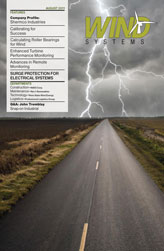Logistics roles and responsibilities tend to be compartmentalized within companies. One group may handle project deliveries, another group manages inbound plant logistics, and a third group arranges oversea transportation. Outside the organization the responsibilities are segmented even more sharply, sometimes resulting in confusion and lost opportunity. The goals and the objectives of one group may not match the needs of another group. For instance, the overseas shipping group wants to minimize costs from Europe to North America, but the total cost of the transport depends on the product going into the right port to realize subsequent gains in North America. For instance, it may cost more to ship product to New Orleans versus a port on the southeast coast, but in New Orleans barge options are available to move product at much lower costs to the Midwest.
Process Management Matters
The key to keeping everyone aligned and coordinated is through sound process management, excellent communication, and good leadership. Starting from the beginning in the pre-production planning stage, companies should assess the inbound logistics plans and ensure that they coordinate with outbound sales. Suppliers are dependent on manufacturers providing them forecasts that represent the more-current outlook. Manufacturers need to understand the material availability information, supplier ramp-up capabilities, and match the expected parts feed rate into the internal production schedules. A shortage of a single part will disrupt the entire supply chain.
Suppliers with known material shortages or ramp up problems need to be monitored. Resources could be extended out to the supplier as a possible solution. This option can only happen if everyone is communicating. For tough cases, leadership needs to force inter- and intra-organization cooperation and problem solving. Finally, suppliers need to communicate with manufacturers on product availability. It is critical that plants know when the product will arrive so they can plan their resources accordingly.
For outbound deliveries, the same concepts apply. Companies must develop robust yet flexible strategies, communicate with all parties that touch the product, communicate handoff plans, and look for ways to smooth the flow of product. Invariably there will be bottlenecks in the delivery process. Leaders need to determine the root cause of the bottleneck and develop a plan to overcome the issues. For instance, traffic problems could be alleviated by alternate routing, adding a crane, or changing the sequence of the material flow.
Platform for Improvement
Tightly managed and coordinated teams also serve as an innovation platform for future improvements. When all parties are clearly communicating in an open environment, it is safe for them to propose different ideas. For instance, designing a hydraulic slide at the back of the trailer could eliminate the need for a crane pick. This concept not only improves efficiency, but it also increases flexibility. It is important for the project leader to foster open and candid communication and demonstrate the acceptance of new ideas.
Unlike standard industries such as hard consumer goods where product, supply, and demand are fairly constant and predictable, the wind industry is sporadic, each project is new, and the timing and dimensional nature of the product requires complex logistics solutions. Keeping a strong hand on the process, ensuring open and candid communication across the supplier base, and solid leadership for problem resolution will help the organization be successful.


































